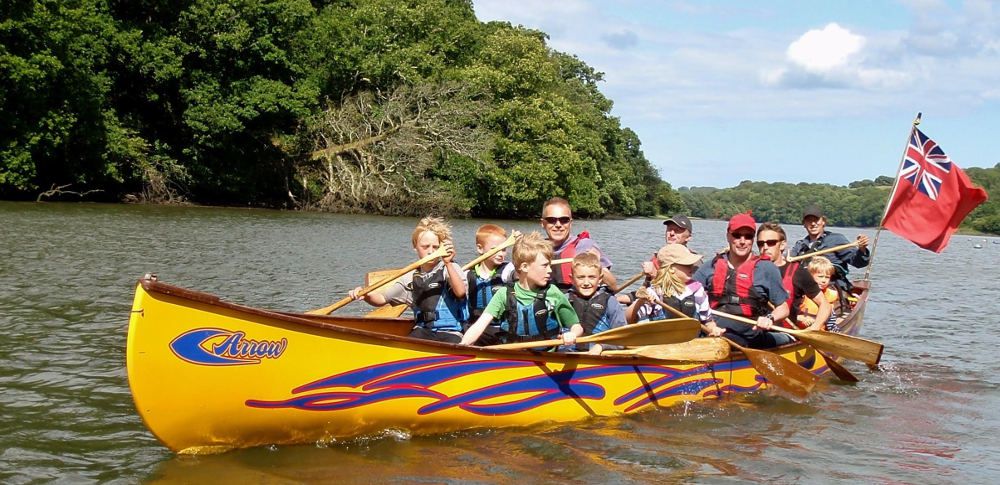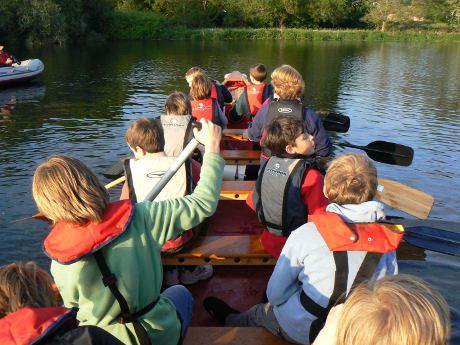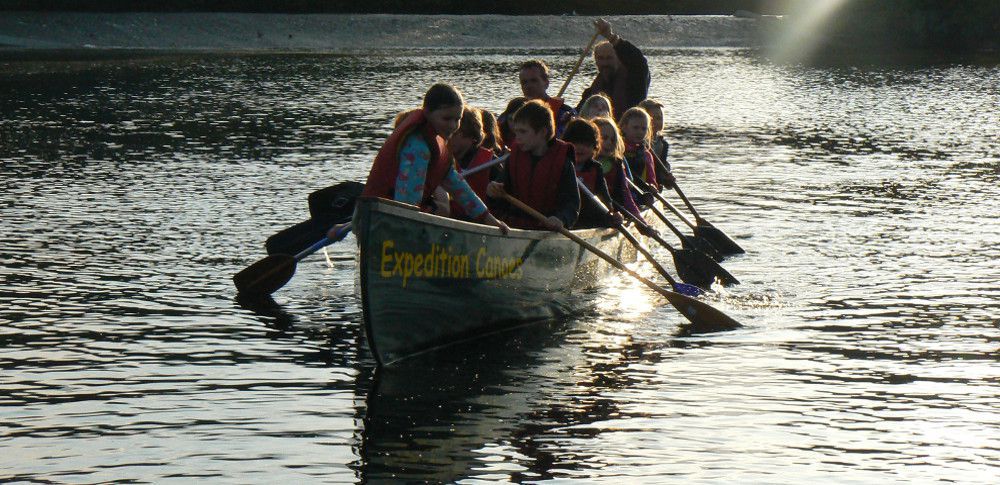
The 9 metre Longbow canoe has been particularly successful in an outdoor education role as a range of ages can be taught canoeing under close instruction with a staff to pupil ratio of 1:12.

The Longbow is stable enough for the instructor to walk from one end to the other while under way. Games such as pupils swapping seats is easy to set up and racing between two canoes is great fun and emphasises the rewards of good teamwork.
Personal flotation devices should be used but, unlike with small canoes, wet suits are seldom necessary as usually pupils usually remain dry. This makes for less time spent in changing rooms.
The Longbows designed stability means that Pupils do not require wetsuits, simplifying operations and time lost in changing rooms. This proved to be a lifeline for one Irish customer CP Adventure who was able to continue operating during Covid when indoor changing was banned. (Their fleet of SUPS and smaller canoes all required the use of wetsuits and indoor changing). See CP Adventure
Having many pupils in one canoe reduces supervision issues where instructors spend much of their time rounding up wayward smaller canoes.
The Longbow can also be used as a mother-ship for smaller canoes on larger expeditions to carry camping gear and provisions, having a total capacity of 1,000 kilograms. Over-tired pupils can also be taken aboard for a rest and special attention.
Forward motion is easily achieved even with very little paddling technique with the helmsman retaining control of the vessel and having sight of all pupils.
The Longbow is incredibly difficult to capsize as staff discover when they are first trained to use the vessel, but once capsized, the large buoyancy tanks hold the hull high in the water making it easy to flip upright again.
Once upright, it is just a matter of scooping a pupil or instructor back onboard to bucket out the water.
